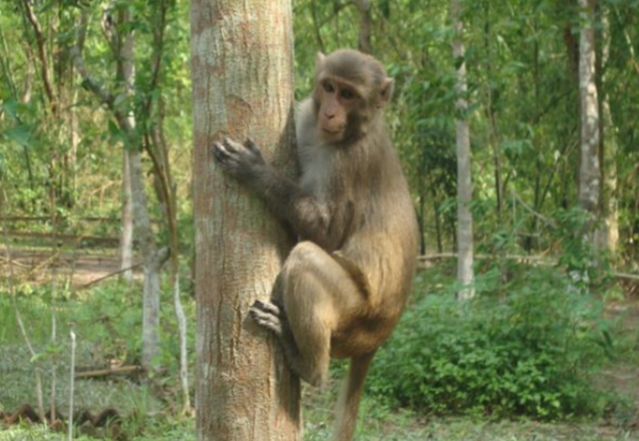The average of Madhupur and Bhawal at a glanceent
The average of Madhupur and Bhawal at a glance
Madhupur Upazila is an Upazila in the Tangail district of Bangladesh, comprising 11 unions. It is one of the 12 Upazilas of Tangail district under the Dhaka division and is located in the northernmost part of Tangail district.
Madhupur Upazila is bounded on the north by Muktagachha Upazila and Jamalpur District of Mymensingh Division, on the south by Ghatail Upazila, on the west by Gopalpur and Dhanbari Upazilas, and the east by Fulbaria Upazila of Mymensingh. The river Banshi has flowed over Madhupur.
Madhupur average
Madhupur Garh or Madhupur Shalban or Madhupur Jungle is a large forest or raised area located in the center of Bangladesh. Madhupur Garh area extends from the southern part of Jamalpur district in the north to Fatulla thana of Narayanganj Sadar Upazila in the south.
Tangail and Gazipur districts and most of the city of Dhaka are included in this average region. The northern part of the average is known as the Madhupur average and the southern part as the Bhawal average. Madhupur National Park is located in Madhupur Upazila and Bhawal with some parts of Gazipur.
The national park has been formed.
After the Madhupur forest came under the Forest Department in 1972, initiatives were taken to conserve the biodiversity of this forest. According to the Bangladesh Wildlife Conservation Act of 1974, the objective of conserving biodiversity was declared in 1972. 6436 hectares of this forest area were declared as two national parks named Madhupur and Bhawal.
The formation of Madhupur Garh is slightly higher than the floodplain adjacent to the land accumulation of this region which is formed by the combination of Halocyte and Elite. Together these form the elongated terrain to the north-south which belongs to the monumental archeological site.
During the post-Pleistocene period, several Pleistocene terraces became isolated due to heavy rainfall and various erosions in the region. Later, these terraces merged and filled the open space with fertile silt to form a floodplain.
Madhupur is composed of an extremely crushed and oxidized reddish-brown sediment or primitive rock called mud. This precipitation is caused by climatic factors in the new Pleistocene epoch and is composed of several Pleistocene terraces that split.
It is the second-largest Pleistocene Square in Bangladesh. Geologists estimate that the silt formed by the accumulated riverine environment formed about 0.98 to 0.90 million years ago.
Madhupur is an average animal
Madhupur Garh is the third-largest natural forest in Bangladesh and is rich in biodiversity. On average, there are 190 species of animals.
Madhupur National Park is home to 21 species of mammals, 140 species of birds, and 29 species of reptiles. Notable animals include the mouth-watering Hanuman, the red-faced monkey, the Maya deer, the rabbit, the wild boar, the various species of birds, the Megh Hu, the mashranga, the khaira Gocha owl, and the wild rooster. Besides, in the past Madhupur was home to animals like elephants, tigers, cheetahs, and peacocks.
Also deer, leopard, wolf, monkey, Hanuman, wild bird, fish cat, khek fox, khatas, bhodar, beji, forest buffalo, sambar deer, maya deer, wild boar, wood cat, hedgehog, forest rooster, black partridge, Bandai, Harial, Tila Ghughu, Pink Ghughu, Ram Ghughu, Par Ghughu, Waz Ghughu, Tia, Kul Maina, Buck Harkila, Python, Sonagui, Gokhra, Daraj, Kal Nag, Turtle, etc.
From 16 to 18, 413 elephants were hunted from Madhupur Garh. In addition, according to the Forest Department, Bhawal has an average of 64 species of animals including 8 species of mammals, 9 species of reptiles, 10 species of amphibians, and 39 species of birds.
Madhupur average plants
There are about 18 species of different plants in the Madhupur forest. There are 63 species of trees, 22 species of shrubs, 26 species of climbers, 6 species of grasses, 1 species of palm trees, and 45 species of medicinal plants. In addition, several exotic species of plants have been planted at the initiative of the forest department.
Madhupur has the most common shawl or gajari tree which is why it is also known as Shalban. Notable plants include shawl, mahua, behera, amalki, turmeric, amra, jiga, bhadi, ashvattha, bot, serpent-scented, asparagus, jaina, bidha, hargoja, behula, etc. Besides, fruit plants like mango, jackfruit, blackberry, guava, etc. are found all over the region.
The reason for the decline of Madhupur average animals and plants
Bangladesh’s fauna is in deep crisis today due to poaching and ecosystems. Due to changes in the ecosystem, the wildlife of this flat land forest is now becoming extinct. Many animals have become extinct due to the gradual creation of human habitats, the indulgence of hobbies and greed, smuggling and poaching, the application of pesticides, and the planting of foreign invasive species, changing the balance of the ecosystem.
The remaining endangered wildlife is also on the verge of extinction. In Madhupur and Rasulpur forests there was once a reason for fear of wild elephants. They are extinct today. Lack of space, breeding, feeding, and rest of wild animals are being hampered as people cut down forests to create habitat and cut down large native trees, and plant foreign invasive species in order to conserve space.



